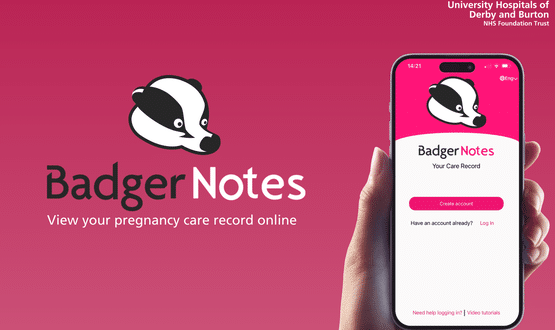Southend-on-System C
- 6 March 2013

In a slightly cramped PAS project office tucked away in the midst of Southend Hospital, trust staff and System C staff sit side-by-side.
As they tap away on their keyboards, they can easily swivel around to ask a quick question. This has created a collegial working relationship, which both sides say is helping to make sure that the trust is prepared for the major project it has embarked upon.
Staff from System C, a McKesson company, came on-site in August last year and will stay until August this year , 40 days after the planned go-live of the patient administration system in July.
The trust’s internal team is busy configuring the system to meet staff needs and interfacing the PAS with its 36 departmental systems. System C staff are focusing mainly on data migration.
The trust decided to migrate two years of patient data with the full patient master index, and just under 1m patient records have been migrated across.
Meanwhile, Southend has some 70 ‘super-users’ who are part of discussions about configuration and involved in testing how the system should work.
“Every single person in this hospital has a vested interest in this going well, so it’s a huge project. It’s enabled by IT, but is not an IT project; it’s a business change project,” says interim director of IT Alan Tuckwood.
Business case one
Southend decided years ago to opt out of the National Programme for IT in the NHS and procure its own systems.
It started procurement for a PAS in 2010 using the NHS Connecting for Health ASCC framework, which was initially established to deliver additional systems to trusts.
Southend thought this would be fastest route to get a new PAS, which it needs because the contract for its old McKesson system is about to expire.
The trust was one of 20 or so across the country using legacy McKesson systems under a support deal signed by the Department of Health when it became obvious that NPfIT, which was meant to replace them, was running late. This deal expires in 2014.
However, the executive team at Southend wanted to see significant operational benefits from a new PAS, and not just secure a like-for-like replacement. This led the board to refuse the first business case to buy Medway.
“Because the business case couldn’t convincingly demonstrate that significant benefits could be achieved they said no to the recommendation,” PAS project manager John Lloyd explains. “We hadn’t done enough business analysis work to convincingly justify the benefits being claimed.”
Lloyd joined the trust two and a half years ago as EPR programme manager, but work on the PAS procurement became so demanding that he became one of two trust PAS project managers.
A supplier project manager has also been appointed, but even with three people on board Lloyd says they sometimes “barely keep up with the workload.”
Business case two
Southend has 780 beds and 4,500 staff. About half of these staff use the PAS for 90,000 admissions a year and 540,000 outpatient appointments.
When the team looked at the business case again, they found they could not cost-benefit the PAS, but major benefits would flow from an electronic patient record implementation.
“The fact that so few trusts have implemented EPR fully makes it difficult to point to trusts and say ‘they have done it, so we can do it’. So the benefits are in many cases still theoretical, although very attractive in some cases,” Lloyd explains.
His team ultimately put forward a case for a two-step process: a PAS replacement, which had to happen because support for the legacy system was due to run-out, followed by a full EPR that could include order communications, theatres, maternity, clinical noting and electronic prescribing.
The business case was passed, Southend went out to procurement; and again chose Medway. “We’re convinced it’s the best PAS on the market,” says Lloyd.
On advice from University Hospitals Bristol NHS Foundation Trust, which has already been through a similar deployment, Southend decided to replace current processes like-for-like, and then work on operational change.
However, the trust is also looking for quick wins, so is rolling out real-time bed management alongside the PAS as a way of exploiting some of the features of the system early.
Southend also plans to invest in electronic document management. It already has an in-house EDM system called Clinical Electronic Documents which holds discharge summaries and consultant letters to GPs.
The trust has recently opened up this system to other types of documentation. For example, it worked with the orthopaedic department to scan in necessary historical documents and the department no longer uses paper case notes.
Change of outlook
From his ‘tower block’ office at Southend Hospital, chief operating officer Rupert Wainwright explains that the trust had not previously invested much in IT.
That outlook has changed significantly over the past 18 months, as new faces on the executive team saw that while the trust has “great infrastructure” it had no customer-facing systems.
“We’re now writing an IT strategy to make us very modern without any money whatsoever,” he says.
Wainwright believes the key to becoming ‘paper-lite’ is using the system to make changes so areas of the hospital stop producing paper in the first place.
In two years, he envisages that the trust will have deployed the PAS and real-time bed management and every ward will have electronic whiteboards, which multi-disciplinary teams will use for their morning meetings, rather than paper.
A pilot of electronic whiteboards starts in September. “That’s a real business process change,” says Wainwright.
“Removing patient handover notes is absolutely key to this, and we’ll only do that by replacing it with something more reliable and easier to use.
“We see that technology has changed things immeasurably but the NHS is very much behind. We have finally reached the stage where, because money is tight, it enables us to move forward with technology because cost benefits are finally balancing.”
He adds that deploying more devices is very much part of the plan, saying this will involve conventional PCs and a bring-your-own-device strategy.
Clincian feedback is that while the trust’s departmental systems work well independently, they need a single view of them via something like a portal. Wainwright says this could involve the trust using open source code to develop its own portal.
It’s all in the delivery
PAS project manager Donna Shine says two analysts have mapped current processes using the PAS, so they can predict how the new system will impact on users.
“We are hoping the impact will be fairly minimal. If anything, areas should experience more efficiency as a result of the new PAS,” she says. “Speed might be an issue at first as people adapt to the new working.”
Shine says engagement with clinicians is an issue because without a lot of functionality to offer up front, it is tricky to draw them in.
However, Southend is lucky to have an IT-engaged clinician in James Brown, a consultant vascular surgeon who is the clinical advisor on the PAS project.
Brown landed the job when each business unit at the trust was asked to send a representative to a PAS replacement meeting and he was the only clinician to turn up.
Part of his role is to look at how to get more clinicians using the PAS by entering clinical data.
“I have been trying to look at the carrots to get new users into actually want to use the PAS as opposed to being forced to use it,” he says. “So it’s like, ‘we want you to fill this form in online for every patient, but in return the PAS will do this for you’.”
He is also keen on the idea of electronic handover as being very useful for clinicians. “We want to develop people to start thinking about how they can use this and that will start defining how we want our EPR to behave,” he explains.
Brown, who sat on the assessment committee for the various bidders, says he was impressed by the professional, straight-forward approach of System C.
Working side by side
System C’s onsite deployment team has around ten people. Programme manager Miles says that because Southend went through the procurement process twice, the trust was very sure about its scope and the executive was very much on board with the programme of work.
“The team here is very good, very capable, very set up and ready to go from day one,” he says.“That was quite refreshing coming in and having that drive from the outside, it certainly helped us to work together.”




